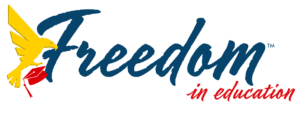Educational Freedom
Educational Freedom, often referred to as "School Choice," is an effective educational policy that empowers parents to select the optimal learning environment for their children based on individual needs and preferences. Our belief is rooted in providing every child access to a high-quality education, regardless of economic status, location, or school ranking. Recognizing that education isn't a uniform concept, we advocate for diverse options including public, private, parochial, charter, homeschooling, hybrid, and pod schooling. Our goal is to bridge educational disparities through the promotion of educational freedom.
Benefits of Educational Freedom (aka school choice):
Customized Education
Educational Freedom enables parents the ability to select educational options that align with their child's unique learning style, interests, and needs. Leading to a more personalized and effective educational experience.
Competition and Quality Improvement
When parents can choose among various schools, educational institutions are incentivized to improve their programs and services to attract and retain students. This can result in higher standards of education across the board.
Diverse Learning Environments
Educational Freedom can provide access to a variety of educational philosophies, teaching methods, and curriculum approaches. This diversity can cater to students with different strengths, interests, and goals.
Empowerment of Parents
Educational freedom empowers parents to have a more active role in their child's education. They can select a school that aligns with their values, priorities, and educational goals for their children.
Addressing Special Needs
Having access to choose can be particularly beneficial for students with special needs or learning differences. Parents can choose schools that have specific programs, resources, and expertise to meet their child's requirements.
Reduced Monopoly
In traditional public-school systems, families are typically assigned to a specific school based on their residential address. Educational Freedom can break the monopoly of assigned schools and provide families with more options beyond their local district.
Innovation and Creativity
Educational Freedom fosters innovation in education as different schools’ experiment with new teaching methods, technologies, and approaches. This experimentation can lead to the development of effective educational practices that can be adopted more widely.
Parental Engagement
With Educational Freedom, parents tend to be more engaged and invested in their child's education since they actively choose the school. This engagement can positively impact student performance and overall educational outcomes.
Reduced School Crowding
Educational Freedom can help alleviate overcrowding in popular schools by allowing students to attend other schools with available space, thus improving the student-teacher ratio and potentially enhancing the learning environment.
